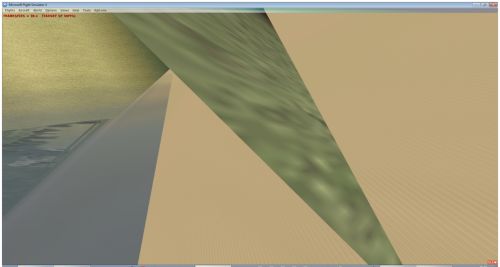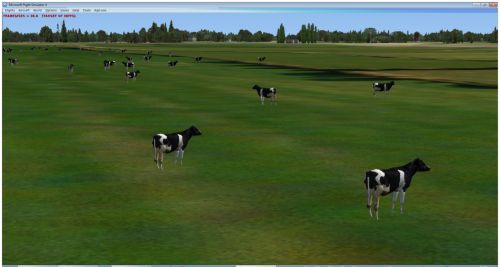A while ago I started to explore the possibilities of custom autogen objects a bit more. I wanted to see what I could do with custom vegetation groups for polygonal vegetation. In this post I want to share some of my finding until now.
Using the Annotator configuration editor it is not so hard to add new objects to the AutogenDescriptions.xml file. Instead of adding a tree model, I decided to add some models of cows and see how well that works as “vegetation” in a field.
One obvious benefit of this approach is that it allows the cows to be seasonal. I can setup the autogen so that the model does not show during the winter. With normal placement of the models in FSX that is much harder to achieve.
But I ran into a couple of problems when I used my new vegetation group in my autogen.
First my objects did not show at all. After some trial and error I found out that for autogen you can only use MDL files that have drawcall batching enabled. If that is not the case, nothing will show at all. So if you made your model in GMax it will not work, you first need to change the MDL to use drawcall batching (you can do this in ModelConverterX).
The second problem is shown in the picture below.

You might wonder what it is, but I got all kind of weird effects on my screen. It looked like huge polygons with random textures from the surrounding. After some more trial and error I found at that if I reduced the complexity of my cow model these effects are gone.
I think it is related with too many polygons in a single drawcall, but I can’t be sure of course. From my experimentation I have concluded that it is best to keep autogen models below 200 triangles, then these issues don’t seem to happy with the maximum autogen density. If the vegetation class is less dense (by adding a zero guid with enough weight) the higher triangle count models work fine as well.
So now I have some cows standing around in my field and they are placed with autogen. I quite like the effect and will continue to explore other ways to make more use of autogen.

 SceneryDesign.org
SceneryDesign.org
Very interesting to share your step to get this funny result… sure it will be usefull too 🙂 keep the great work Arno.